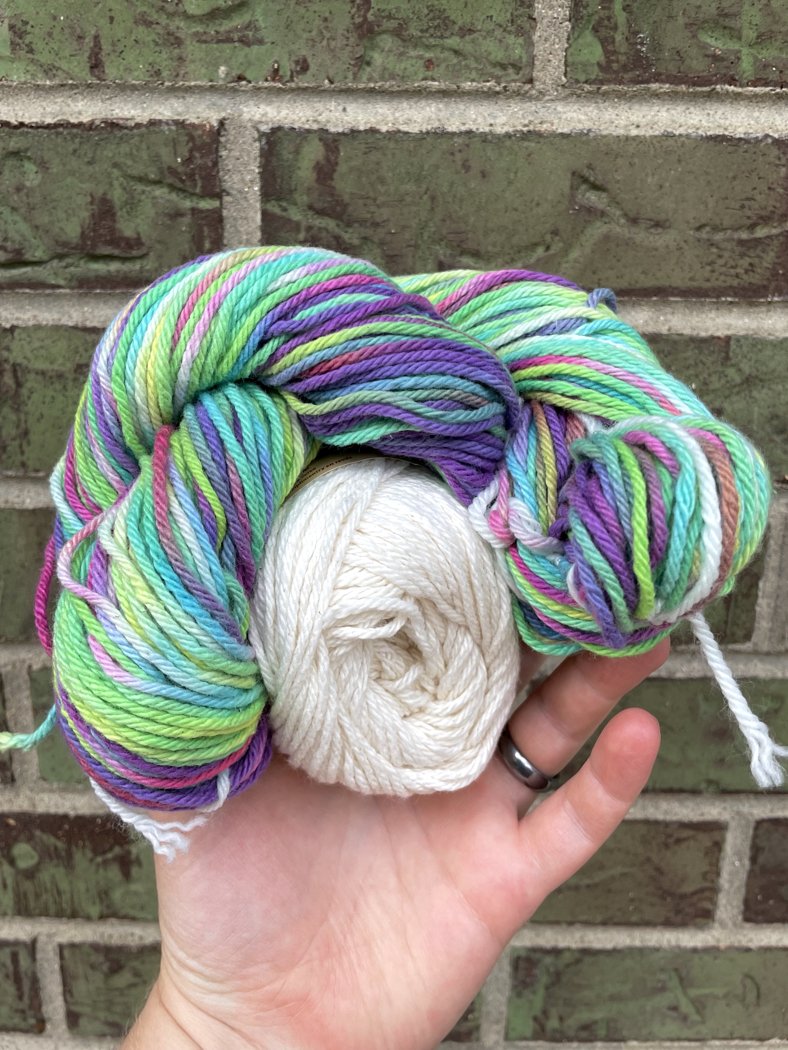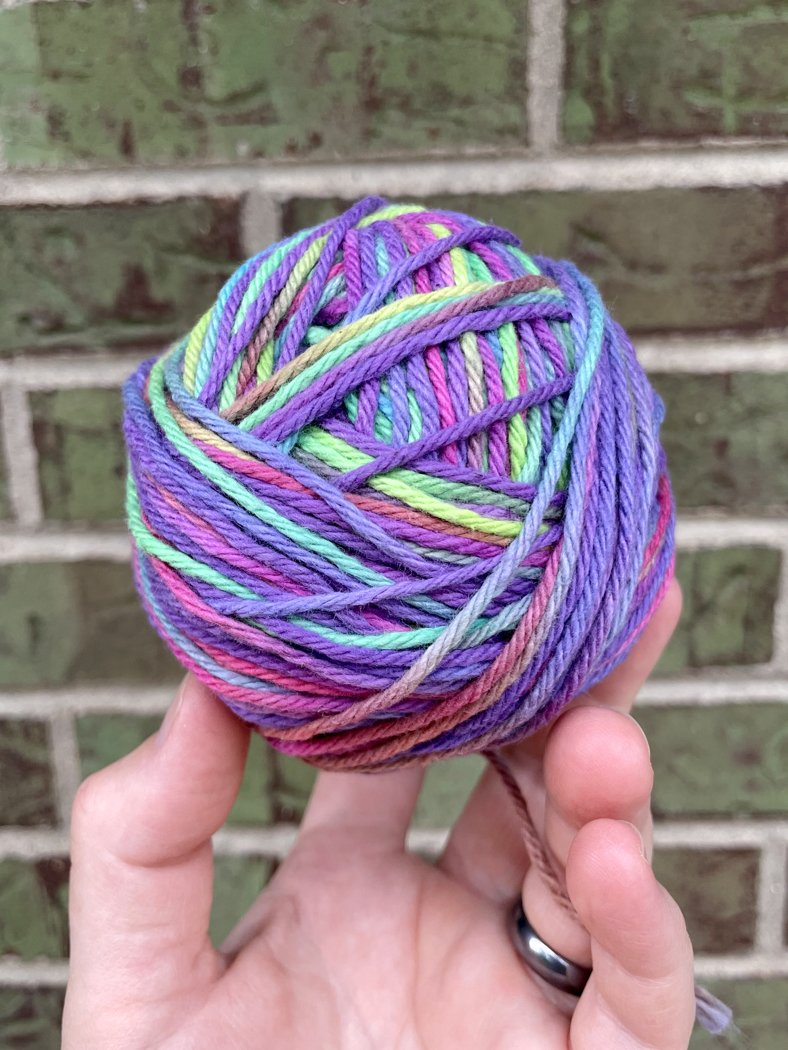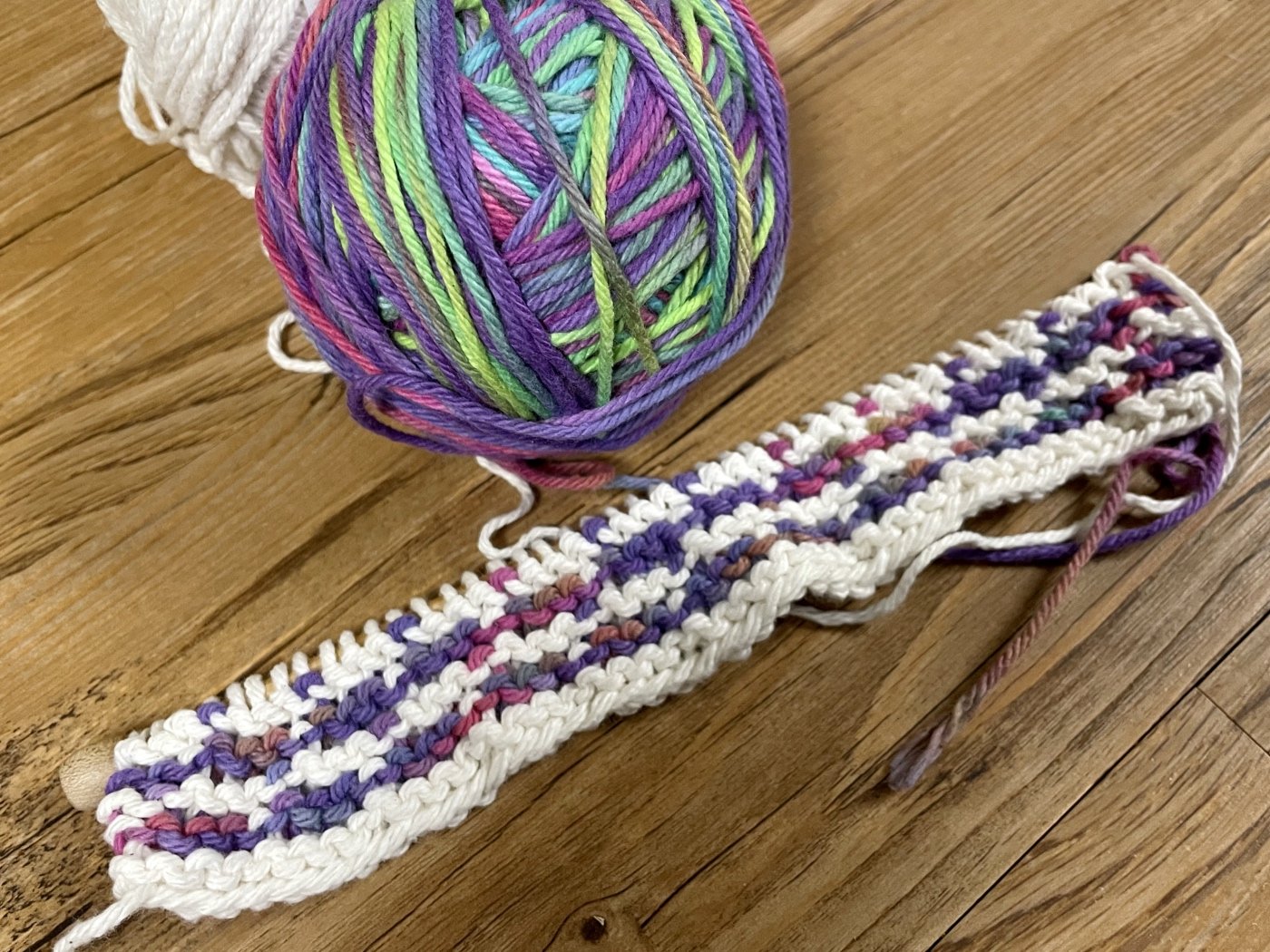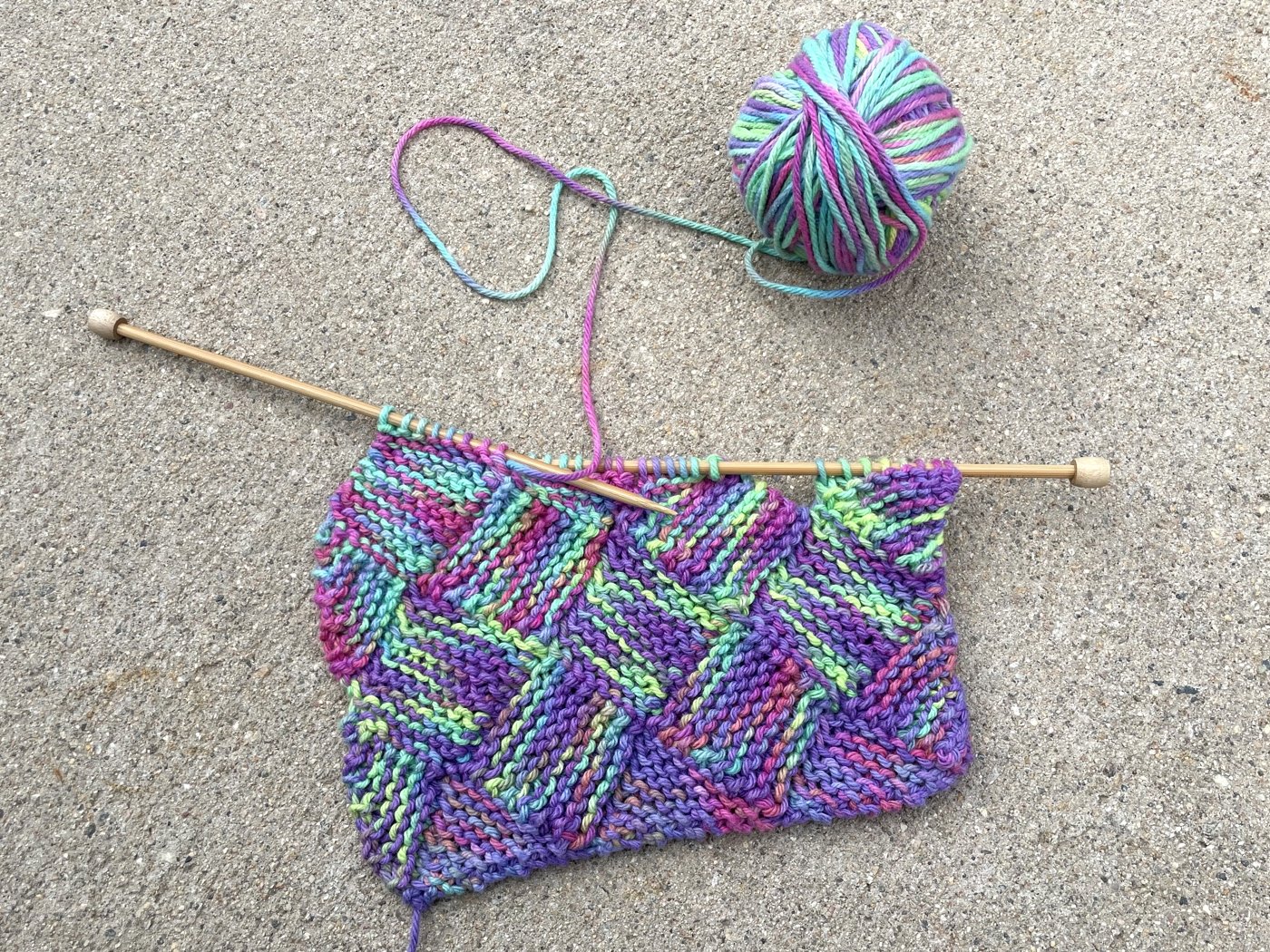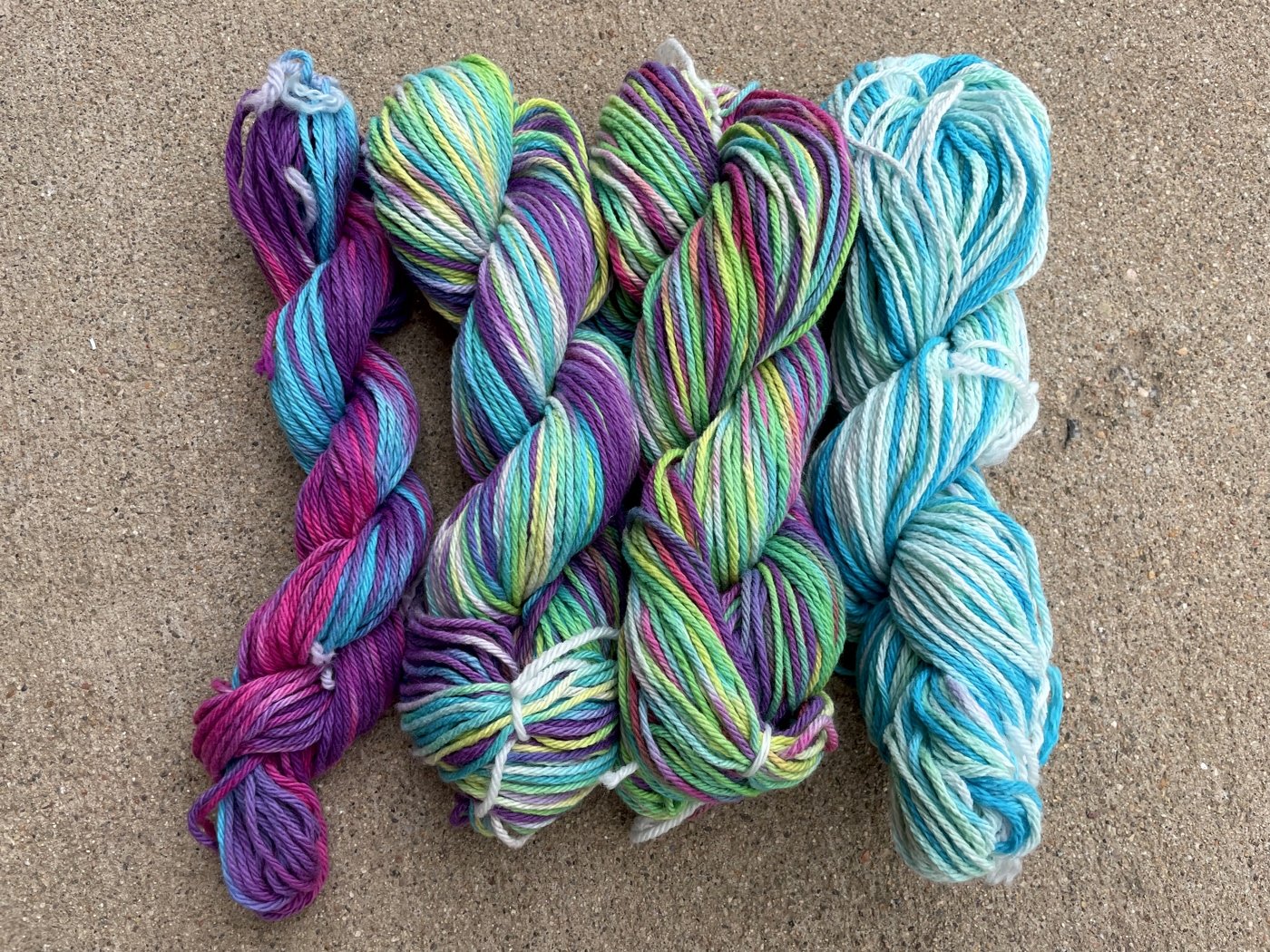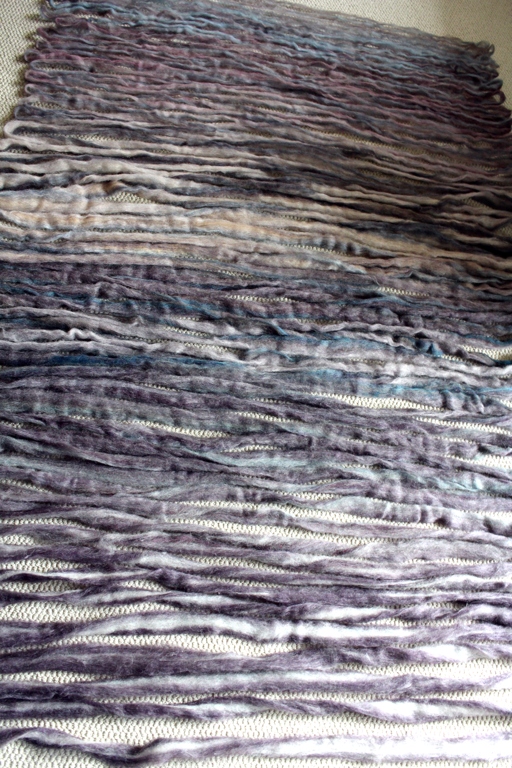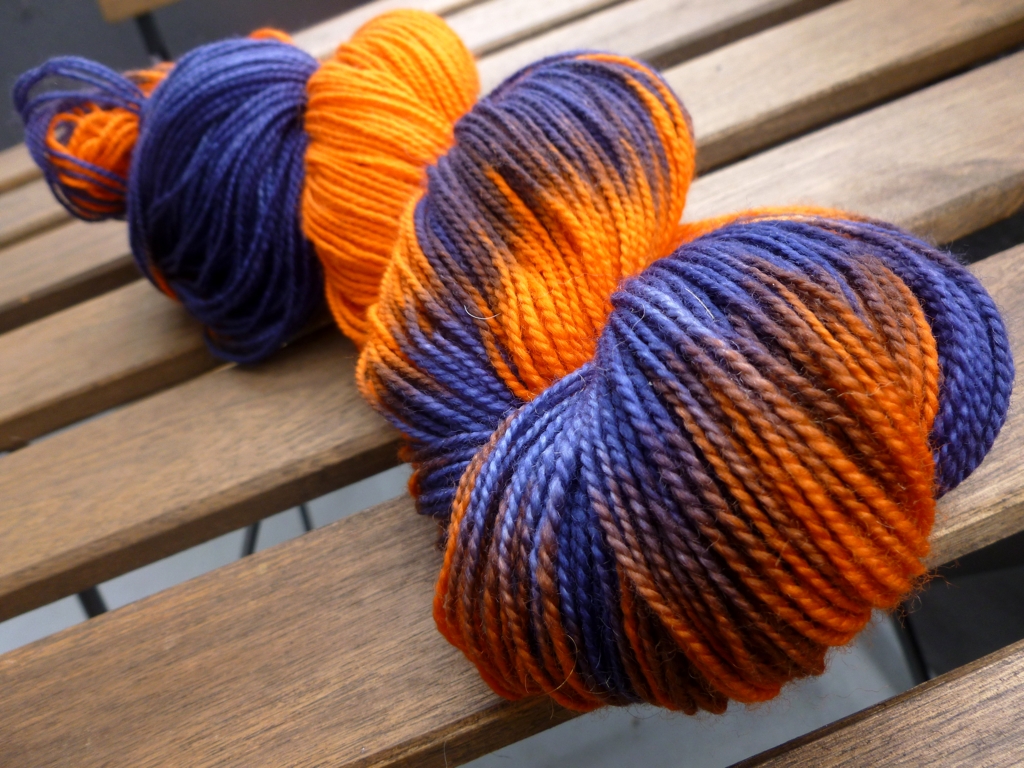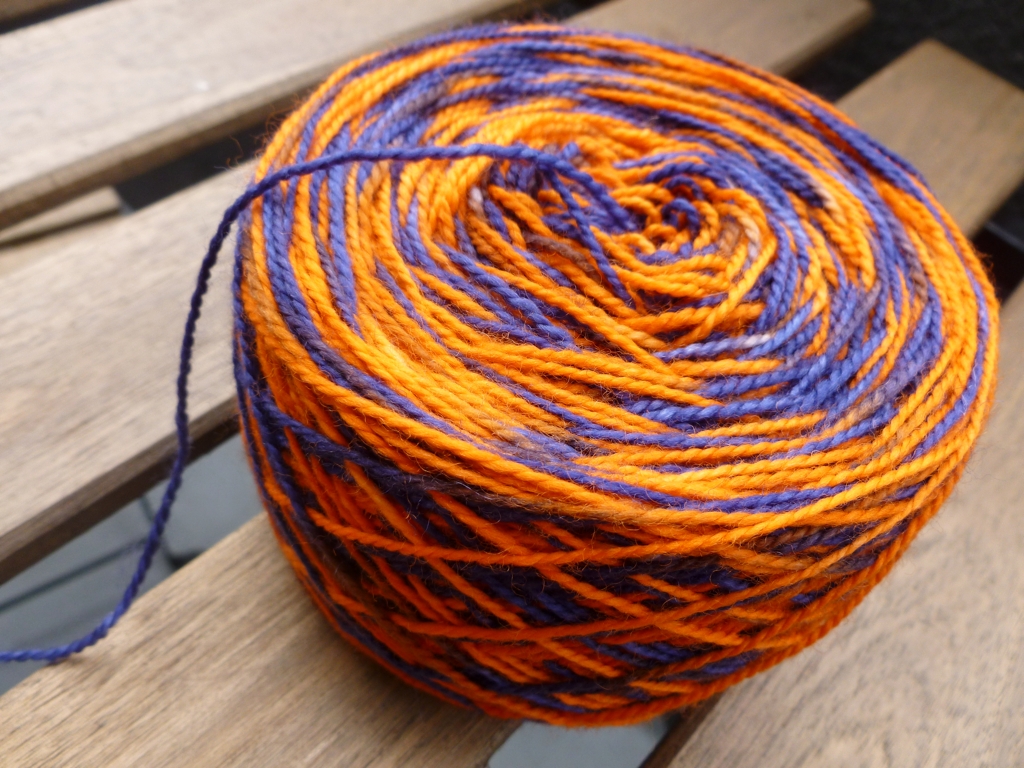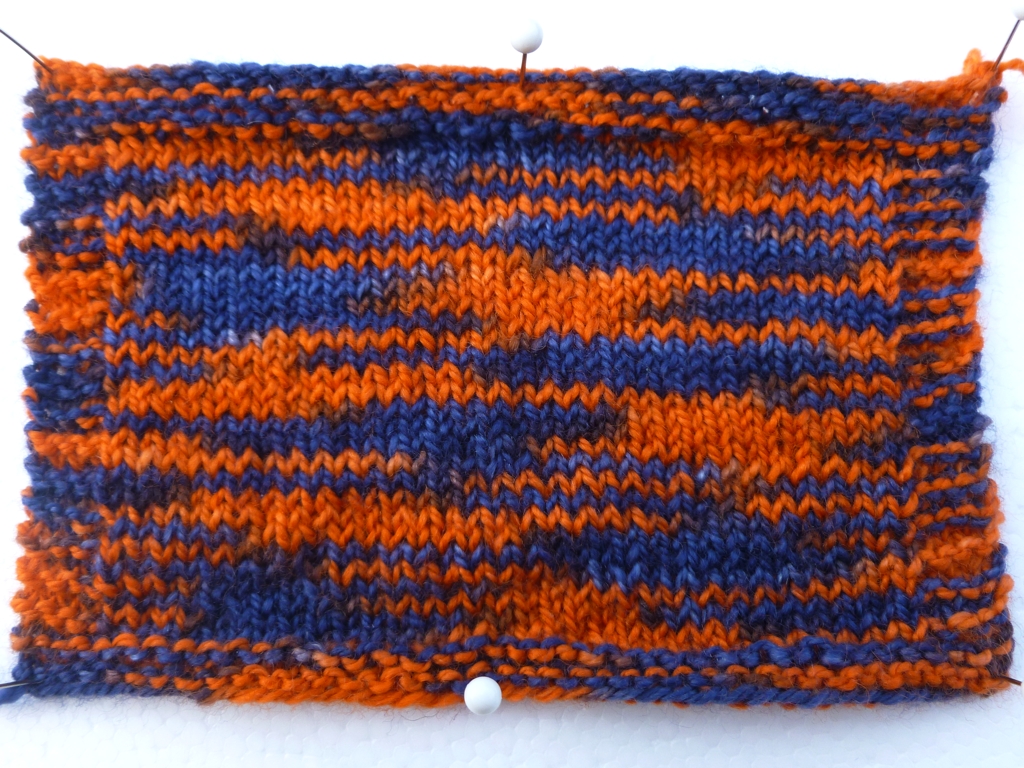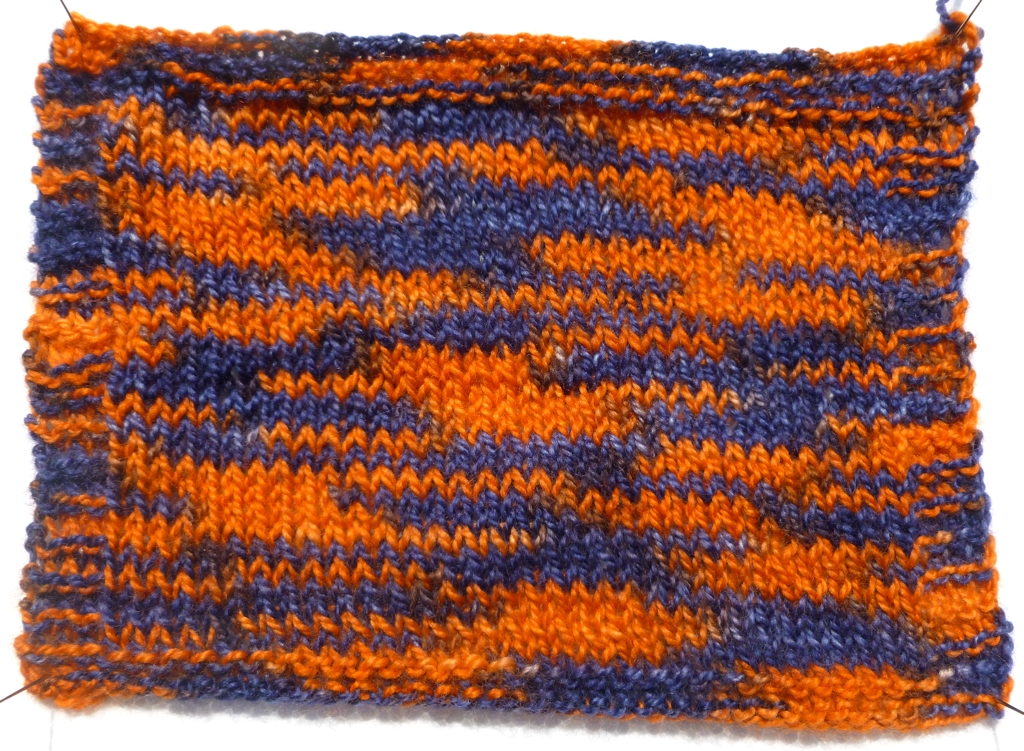Fun With Tie-Dyed Yarn
/I could only pass by the cotton yarn I tie-dyed (you can read all about that multi-step process here) for so long, before I couldn’t resist winding it up into a ball any longer. There had been plenty of time for me to pick out a pattern or two while I waited on this yarn to dry. Over the many years that I’ve been knitting washcloths and kitchen towels, I’ve definitely figured out what I like. Washcloths can be most any shape, lacey, or textured so long as they are just the right size. That sweet spot is about 7” (about 18cm) square. Kitchen towels I like long and narrow (around 8-9” [20-23cm]wide) so I can easily throw them over my shoulder or hang over the oven door handle. Even better if garter stitch is involved. Sounds boring to make, but hear me out. Garter stitch doesn’t curl, makes a thick fabric, and won’t have any annoying gaps in it (assuming you knit it at a tight-ish gauge). Plus, there’s so many ways to make a garter stitch kitchen towel look cool. It doesn’t have to be knit stitch across every row. Try mosaic knitting, entrelac, a log cabin motif, stripes, chevrons, or knitting on the bias. Throw solid and variegated yarns into the mix, and you’ve got a lot of possibilities to make a really great, functional kitchen towel. Didn’t expect to find my soap box just then, but there you go.
My plan for this particular skein was to knit the Slip Stitch Dishcloth with this Lisa Frank-inspired skein and the ecru yarn. I’d get to see all the awesome colors, knit something fun from my queue, and use up some stash yarn. That’s all good stuff in my book.
I wound the yarn by hand, a rarity for me, and am super happy I did. Even the ball is pretty, which made me even more excited to knit with it.
So I cast on for the kitchen towel and knit the first repeat. And…meh. I usually like pairing a solid color with an over the top variegated yarn, but this just didn’t work. Knitting another repeat seemed like a waste of time which meant it was time to rip out the whole thing. Not even a little sad about it because I had another pattern in mind, The Garterlac Dishcloth(here’s a not Ravelry link). This will be the third time I’ve knit this pattern, and it’s great for showing off variegated yarn. Cast on when I had time to parse the directions and my previous mods. This time around, I’m completely smitten. The yarn gets to shine and I get to knit something really fun.
Just a few repeats in here and you can already see the ombre start with a deep purple and start fading to a more recognizable tie-die aesthetic.
I was happy to be knitting this (and I finally got the chance to watch The Bob’s Burgers Movie) that I kept on knitting through the weekend. I had a really hard time putting this WIP down. It wasn’t until I was working the top edge that I noticed something was a little off. Okay, way off. I know knitting can look a little wonky until it gets a good wash, but a trip through the washing machine isn’t going to fix this very skewed kitchen towel. That’s when I noticed this:
See this spot with the star? I added an extra square to one of the rows without realizing which threw off every row above it. Ugh. Explains that weird gap that was bothering me too. The Bearded One votes to leave it the way it is, but I just know that I’m going to go “ugh” every time I see it. I can’t not rip it out. Plus, I’m pretty sure I didn’t quite follow the instructions correctly for the first few rows anyway. And that wobbly side edge is bothering me too. This kitchen towel’s fate is sealed. On the upside, I get to knit this pretty yarn again. Can’t be angry about that. Still irritated about ripping it out though.

